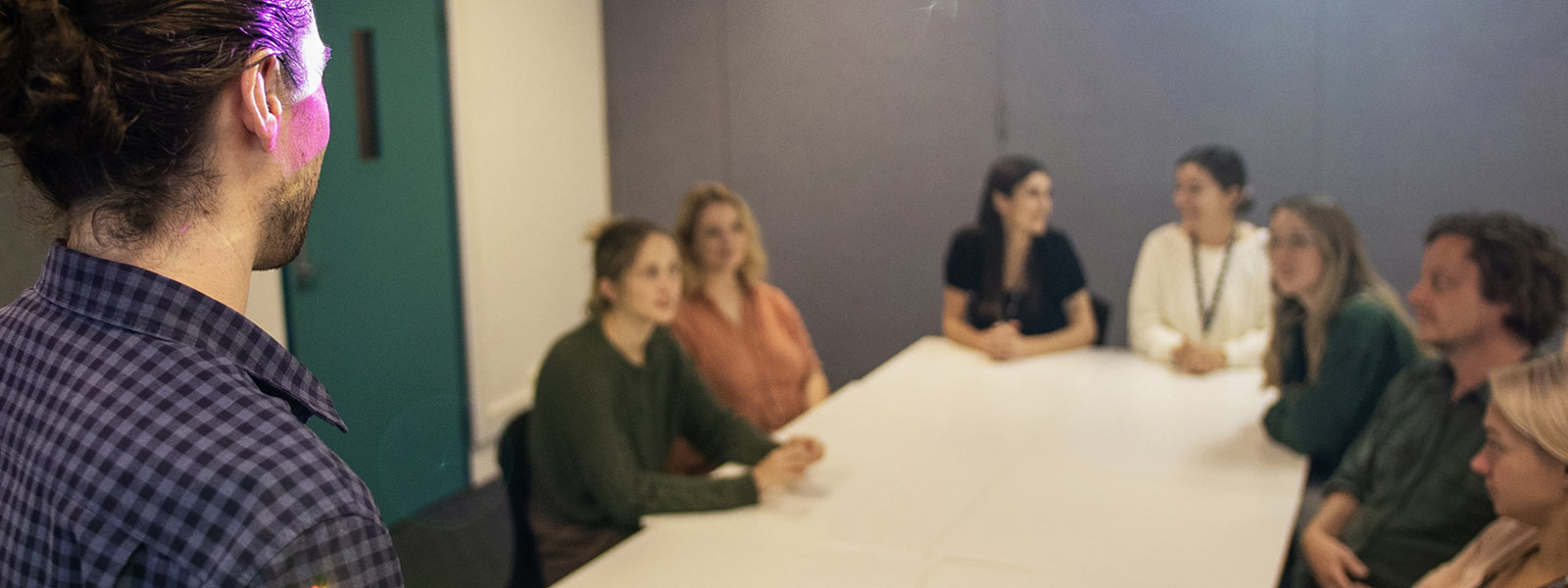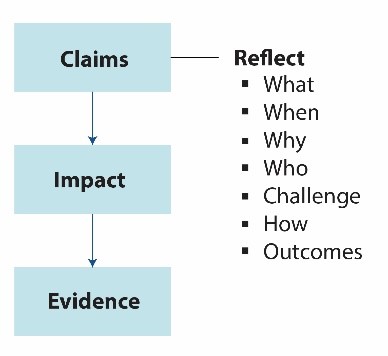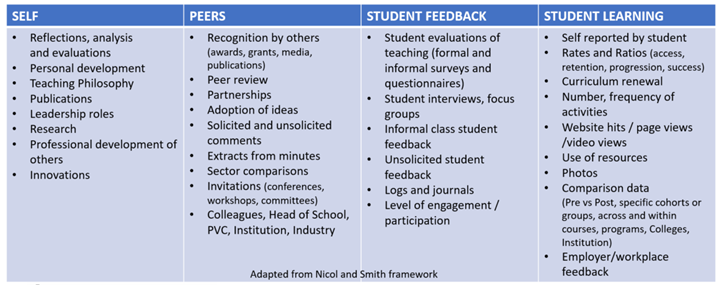
Learning Design and Teaching Innovation
Applying for an award or fellowship is essential when looking for recognition of your teaching excellence. Opportunities are available at all levels, such as College, University, Regional, State, National, and International. This guide will provide you with some tips and suggestions to follow when preparing an application for a teaching award. Look to your Schools, College, and discipline bodies to see what opportunities are available.
Award Application Preparation
When preparing an application consider the following:
- Is the award scheme you are applying the best fit for you?
- Have you read the guidelines and checked eligibility?
- Review the award criteria and categories. If there is more than one category for the award, select the one you can best evidence.
- Should this application be from a team of people or just you as an individual?
- Collect your evidence, analyse, and understand how to best frame it.
- Read/review past applications. Past applicants who have been successful are often very willing to assist or let you read over their submissions.
- Set aside some time and space to write and reflect. Start the process early.
- Be prepared to sell your achievements. Tell a great story. An award application needs to be reflective. It must emphasise and evidence the impact your teaching and leadership has had. This is very different to a CV.
- Use Scholarship of Teaching and Learning (SOTL) references wisely. All references should support your claims and add value to an application. You should show how the SOTL has informed your approach.
- Be yourself and be honest when writing your application.
- Demonstrate your resourcefulness and your passion.
 Application Writing
Application Writing
When writing your application, consider firstly what claims you will be making, what impact this had and provide the evidence to prove your claims. Weave your evidence through the narrative and contextualise it. Tell a story and grab the assessor’s attention. Include the “why” as well as the “what”, explain the challenges and how they were overcome. Your application focus needs to be clear and direct. If required, bring teaching award applications back to a focus on enhancing student learning. When writing:
- Be clear, concise, and coherent. Use simple language – with your own voice showing through. Ensure the writing flows. Consider the reader.
- Try to start each paragraph with a sentence that sums up entirely what you are trying to say. Then unpack that sentence further. Try not to start every sentence with “I did this” or “my”. Instead, offer context and then discuss your contribution.
- Use headings to help structure your application. Align these headings to the award assessment criteria to make it easier for the reader.
- Use the white space – bringing in infographics, or tables, paragraphs etc. A dense application without any space is difficult to read and makes it harder for an assessor.
- You will need to clearly provide arguments to support your claims, e.g., if you believe your approach was innovative, you should explain why it is innovative. Don’t assume the reader/assessor will know.
- Underpin a teaching application with Scholarship of Teaching and Learning (SoTL). How have you drawn on the SoTL in your practice? Has it influenced your approach? Have you contributed to SoTL yourself (e.g., writing peer reviewed journal articles or giving a conference presentation?
- Have you gone above and beyond? Award assessors are looking for excellence. Your application should outline how you and your achievements stand out from your peers.
- Proofread, proofread, proofread.
- Stick to any formatting requirements, e.g., page limits, word limits. Ensure any text in images is legible.
Evidence
Evidence for awards should come from a variety of sources. It should be woven through your narrative, not stand alone. The data should be used to show cause and effect. Show impact over time (considering scale and scope of the impact, e.g., what is the sustainability of your innovations).
Consider the impact of activities and innovations you make on other’s practice and dissemination of your work beyond your immediate context.
Consider evidence in the form of feedback –when using student feedback as evidence, use a balance (quantitative and qualitative). However, don’t just rely on student feedback. Also look at institutional peer awareness and adoption, and internal and external recognition that focuses on the value of the work.
Evidence collection should be done early and preferably over time to allow for evaluation and continual improvement.
Determine and use evidence source(s) that best support your claim of impact.
The list below provides some examples of evidence sources. Think outside the square and be creative to come up with your own. Work towards collecting evidence from the start of a project and analyse the evidence.
Sources of Evidence

![]()
The University of Newcastle acknowledges the traditional custodians of the lands within our footprint areas: Awabakal, Darkinjung, Biripai, Worimi, Wonnarua, and Eora Nations. We also pay respect to the wisdom of our Elders past and present.
